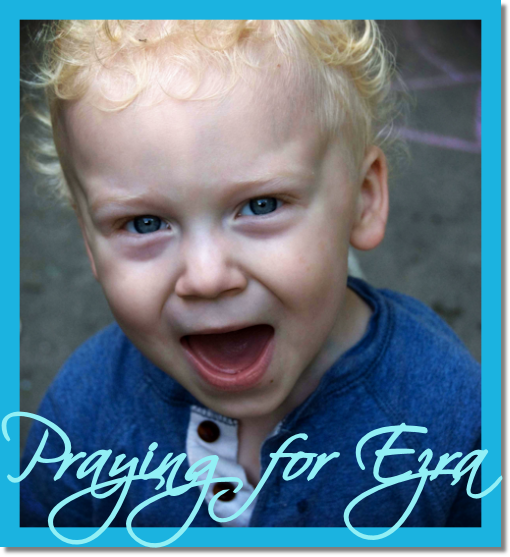It is that time of year where the Mosquitoes, the Bugs, the Bees, the Spiders and the No See-ums are starting to appear.
Lets address these pests. Although many are harmless, some, if not identified and treated immediately, can be DEADLY!
Make sure and check in Friday for a full discussion on LYME DISEASE. You won't want to miss it.
Insect Bites and Stings and Spider Bites
Insect and spider bites often cause minor swelling, redness, pain, and itching. These mild reactions are common and may last from a few hours to a few days. Home treatment is often all that is needed to relieve the symptoms of a mild reaction to common stinging or biting insects and spiders.
Many insects cause mild reactions, such as:
* Mosquitoes.
* Flies.
* Fleas.
* Bedbugs and kissing bugs.
* Chiggers.
* Nonpoisonous spiders.
* Ticks.
* Scabies.
* Lice.
* Mites.
Some insects are more likely than others to cause allergic or toxic reactions.
* A bee leaves the stinger behind and then dies after stinging. Africanized honeybees, the so-called killer bees, are more aggressive than common honeybees and often attack together in great numbers.
* Wasps, including hornets and yellow jackets, can sting over and over. Yellow jackets cause the greatest number of allergic reactions.
* A fire ant attaches to a person by biting with its jaws, then, pivoting its head it stings from its abdomen in a circular pattern at multiple sites.
Bites and stings are more serious if you develop one or more of the following conditions after an insect or spider bite or sting. These conditions include:
* A severe allergic reaction (anaphylaxis).
* A toxic reaction.
* A large skin reaction.
* Signs of a skin infection.
* Serum sickness.
Some people have more severe reactions to bites or stings. Babies and children may be more affected by bites or stings than adults.
Examples of problems that are more serious include:
* A severe allergic reaction (anaphylaxis). Severe allergic reactions are not common but can be life-threatening and require emergency care. Signs or symptoms may include:
o Shock, which may occur if the circulatory system cannot get enough blood to the vital organs.
o Coughing, wheezing, difficulty breathing, or feeling of fullness in the mouth or throat.
o Swelling of the lips, tongue, ears, eyelids, palms of the hands, soles of the feet, and mucous membranes (angioedema).
o Lightheadedness and confusion.
o Nausea, diarrhea, and stomach cramps.
o Hives and reddening of the skin. These symptoms often occur with other symptoms of a severe reaction.
* A toxic reaction to a single sting or bite. Spiders or insects that may cause this include:
o Black widow spider.
o Brown recluse spider.
o Scorpion.
o Puss caterpillar (woolly slug).
* A toxic reaction to multiple stings or bites from a bee, wasp, or fire ant.
o A bee leaves its stinger behind and then dies after stinging. Africanized honeybees, the so-called killer bees, are more aggressive than common honeybees and often attack together in great numbers.
o Wasps, including hornets and yellow jackets, can sting over and over.
o A fire ant attaches to a person by biting with its jaws. Then, pivoting its head, it stings from its belly in a circular pattern at multiple sites.
* A large skin reaction at the site of the bite or sting.
* A skin infection at the site of the bite or sting.
* Serum sickness, a reaction to the medicines (antiserum) used to treat a bite or sting. Serum sickness may cause hives and flu-like symptoms in about 3 to 21 days after the use of antiserum.
* A virus infection. Infected mosquitoes can spread the West Nile virus to people, causing an inflammation of the brain (encephalitis).
* A parasite infection. Infected mosquitoes can spread malaria.
EXPLANATION OF MEDICAL INDICATORS:
ANAPHYLAXIS
Anaphylaxis is a severe allergic reaction that affects the entire body (systemic). It can occur within a few seconds or minutes after a person is exposed to a substance (allergen or antigen).
Symptoms and signs of a severe allergic reaction may include:
* Itching.
* Raised, red bumps on the skin (hives or wheals).
* Wheezing or difficulty breathing.
* Swelling, either in one area or over the entire body. Swelling is most serious when it involves the lips, tongue, mouth, or throat and interferes with breathing.
* Abdominal cramps.
* Low blood pressure, shock, and unconsciousness.
The sooner symptoms occur after exposure to the substance, the more severe the anaphylactic reaction is likely to be. An anaphylactic reaction may occur with the first exposure to an allergen, with every exposure, or after several exposures. An anaphylactic reaction can be life-threatening and is a medical emergency. Emergency care is always needed for an anaphylactic reaction.
SHOCK IN ADULT AND OLDER CHILDREN
Shock is a life-threatening condition. Immediate medical care can make the difference between life and death.
Signs of shock (most of which will be present) include:
* Passing out (losing consciousness).
* Feeling very dizzy or lightheaded, like you may pass out.
* Feeling very weak or having trouble standing up.
* Being less alert. You may suddenly be unable to respond to questions, or you may be confused, restless, or fearful.
Also, a person in shock usually has an abnormal increase in heart rate and an abnormal decrease in blood pressure.
Shock may occur in response to a sudden illness or injury. When the body loses too much blood or fluids, the circulatory system cannot get enough blood to the vital organs, and shock results.
Shock is a life-threatening condition. Immediate medical care is required any time shock is suspected.
* Call 911 or other emergency services.
* Have the person lie down. If there is an injury to the head, neck, or chest, keep the legs flat. Otherwise, raise the person's legs at least 12in..
* If the person vomits, roll him or her to one side to let fluids drain from the mouth. Use care if there could be an injury to the back or neck.
* Stop any bleeding, and splint any broken bones.
* Keep the person warm but not hot. Put a blanket under the person, and cover him or her with a sheet or blanket, depending on the weather. If the person is in a hot place, try to keep him or her cool.
* Take the person's pulse in case medical staff on the phone need to know what the pulse is. Take it again if the person's condition changes.
* Try to keep the person calm.
HIVES
Hives (urticaria) are an allergic reaction of the skin that may last a few minutes or can persist for a few days. They appear as raised, red, itchy bumps (wheals) of different shapes and sizes, with defined red margins and pale centers.
Hives may appear and then disappear at random and seem to move from place to place on the skin. Hives may range in size from less than 0.25in. to 3in. across or larger. Patches of hives may combine to form raised, reddened skin over large areas of the body.
Hives may appear as a reaction to a medication, food, or infection. A single area of swelling often occurs after an insect bite at the site of the bite. Other possible causes include contact with plants, things you breathe in (inhalants), stress, makeup, and exposure to heat, cold, or sunlight. Often a cause cannot be found.
Hives are often minor, but they can also be the first sign of a life-threatening allergic reaction (anaphylaxis) that requires emergency care.
TOXIC REACTION TO INSECT OR SPIDER VENOM
A toxic reaction occurs when insect or spider venom acts like a poison in the body. This type of reaction can occur from one bite or sting from a highly toxic insect or spider, or from multiple bites or stings from insects or spiders not normally considered poisonous.
Symptoms of a toxic reaction vary depending on the insect or spider, the toxicity of the venom, and the amount of venom injected. Most often symptoms lessen or go away within 48 hours. Although hives and difficulty breathing may occur in an allergic reaction, these symptoms will not occur in a toxic reaction. It is possible to have both a toxic reaction and an allergic reaction at the same time.
Signs and symptoms of a toxic reaction may include:
* Nausea or vomiting.
* Diarrhea.
* Fever.
* Weakness.
* Lightheadedness.
* Rapid swelling at the site of the sting.
* Muscle spasms.
* Headache.
* Drowsiness.
* Fainting (syncope).
* Uncontrollable jerking movements (seizures).
A toxic reaction may lead to heart rhythm problems, shock, and death.
Monday, May 18, 2009
OUCHIES
Posted by Lagean Ellis at Monday, May 18, 2009
Subscribe to:
Post Comments (Atom)




























1 comments:
Thanks Gene for all of this info.. George and I both have had skin problems within the past couple of years. Luckily, they weren't serious, and we didn't have other more serious symptoms.
George walked in the woods---and, for the first time in his life, he got eaten up by chiggers (and didn't know it). It took him a few weeks to get over all of the skin problems.
Then, last year, I was pulling weeds in the empty lot next door. I had gloves on --but still broke out with something (probably poison oak). I was a mess for a few days.
We both are being more careful these days..
Have a great day.
Hugs,
Betsy
Post a Comment